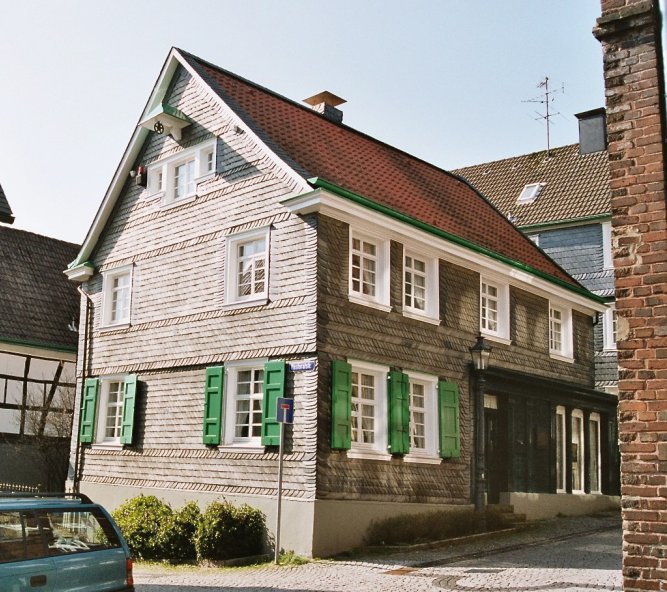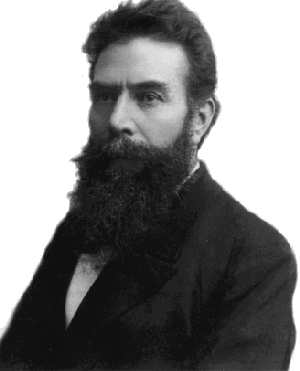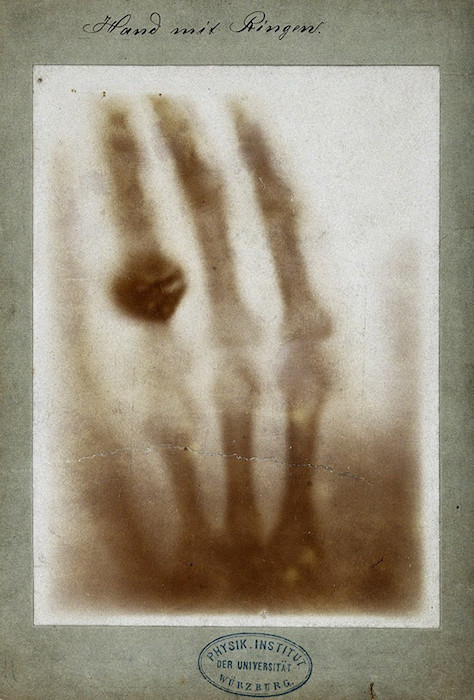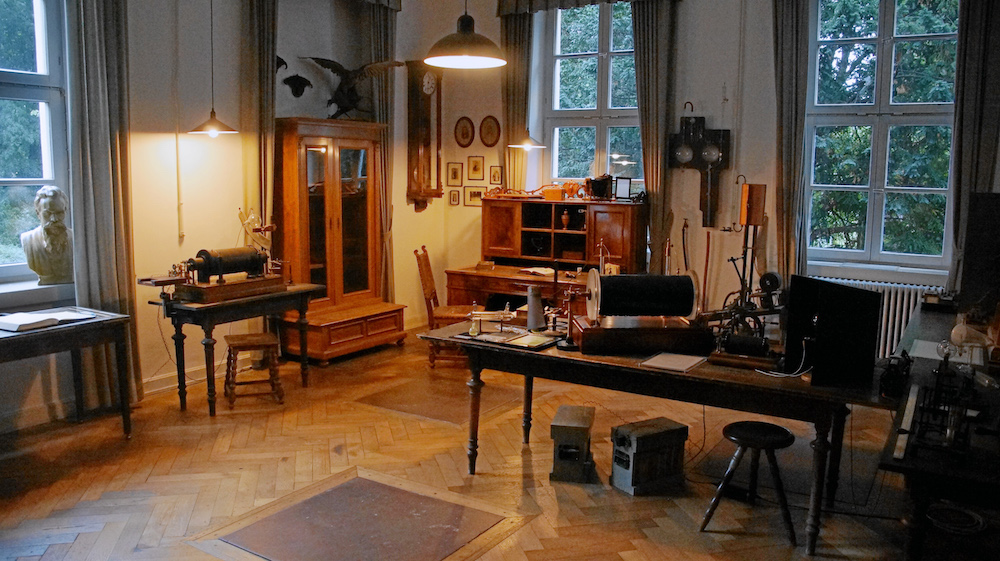
Wilhelm Röntgen was a German physicist who is best known for his discovery of X-rays — a finding that earned him the first Nobel Prize in Physics. Recognized as the father of diagnostic radiology, Röntgen’s contributions marked a revolutionary breakthrough within the medical community.
Wilhelm Röntgen: Pursuing a Career in the Sciences
Wilhelm Conrad Röntgen was born on March 27, 1845, in Lennep, Germany. He was the only child of Charlotte Constanze Frowein and Friedrich Conrad Röntgen, who worked as a textile merchant. As a child, Röntgen expressed an interest in nature and had a knack for building mechanical devices — a characteristic that stayed with him throughout his life.

The house in which Wilhelm Röntgen was born. Image by Markus Schweiss — Own work. Licensed under CC BY-SA 3.0, via Wikimedia Commons.
His path to a scientific career began in 1865 while studying mechanical engineering at the Federal Polytechnic Institute in Zurich. Four years later, Röntgen received his PhD in physics from the University of Zurich. It was during this time that he studied under the wing of Professor August Kundt and worked in his laboratory.
Upon graduation, Röntgen took on the role of Kundt’s assistant. They traveled to the University of Würzburg and later the University of Strasbourg, where Röntgen became a lecturer in 1874. The next year, he was appointed as a physics professor at the Academy of Agriculture at Hohenheim. He then returned to Strasbourg in 1876 as a professor of physics. After three years there, Röntgen was invited to be the chair of physics at the University of Giessen.

Wilhelm Conrad Röntgen. Image in the public domain, via Wikimedia Commons.
Throughout this part of his career, Röntgen conducted research on the specific heat of gases and the thermal conductivity of crystals, publishing papers on these topics. He also performed studies on the electrical properties of quartz, electromagnetic rotation of polarized light, and phenomena correlating with the spread of oil drops on water.
It was during his professorship in Würzburg, where he returned in 1888, that Röntgen made the discovery he is best known for: X-rays.
The Discovery of X-Rays
By 1895, cathode rays (streams of electrons that appear in high-vacuum tubes) were already well known in the scientific community. Looking to build on the work of previous researchers, Röntgen conducted his own experiment on the phenomena accompanying electric current passing through a cathode ray tube. While conducting the experiment, he noticed that a piece of barium platinocyanide that was placed nearby emitted light when the tube was operating.
Röntgen had a theory behind the cause of this fluorescence. He believed that some unknown radiation formed when cathode rays came into contact with the tube’s glass wall and, upon striking the chemical, emitted light. Further studies that Röntgen conducted showed that this new type of radiation was transparent to many other materials, including wood, paper, and aluminum.
Röntgen also found that these rays could expose photographic plates. This prompted him to take the first known X-rays — a name he chose because of the rays’ unknown nature — which were of metal objects and the hand of his wife, Anna Bertha.

An X-ray of Anna Bertha’s hand. Image available in the public domain, via Wikimedia Commons.
Later that year, Röntgen published the first of his three papers on X-rays. Just a few days later, an Austrian newspaper reported on his work. In the years that followed, Röntgen received numerous awards for his discovery, including an honorary Doctor of Medicine degree from the University of Würzburg, the Elliott Cresson Medal, and the first Nobel Prize in Physics.
During this time, Röntgen was appointed physics chair for the University of Munich. He spent the remainder of his career in this role before his retirement in 1920. Röntgen passed away on February 10, 1923, at the age of 77.
Leaving Behind a Lasting Legacy
With his discovery of X-rays, Röntgen provided the foundation for one of the most important advancements in the medical field. By creating shadow-like images of structures within the body, X-rays enable doctors to more easily spot signs of disease or injury and thus diagnose and treat patients with greater efficiency.
The Röntgen Memorial Site in Würzburg, the city where Röntgen discovered X-rays, features various historical machines, instruments, and documents used by the physicist. A collection of his papers can also be found at the National Library of Medicine in Bethesda, Maryland.

A look inside the Röntgen Memorial Site. Image by NearEMPTiness — Own work. Licensed under CC BY-SA 4.0, via Wikimedia Commons.
To further honor Wilhelm Röntgen’s legacy, the International Union of Pure and Applied Chemistry (IUPAC) named an element after him in 2004. Element number 111 is roentgenium.
Further Reading
- Read about innovative research in the medical field on the COMSOL Blog:



Comments (0)